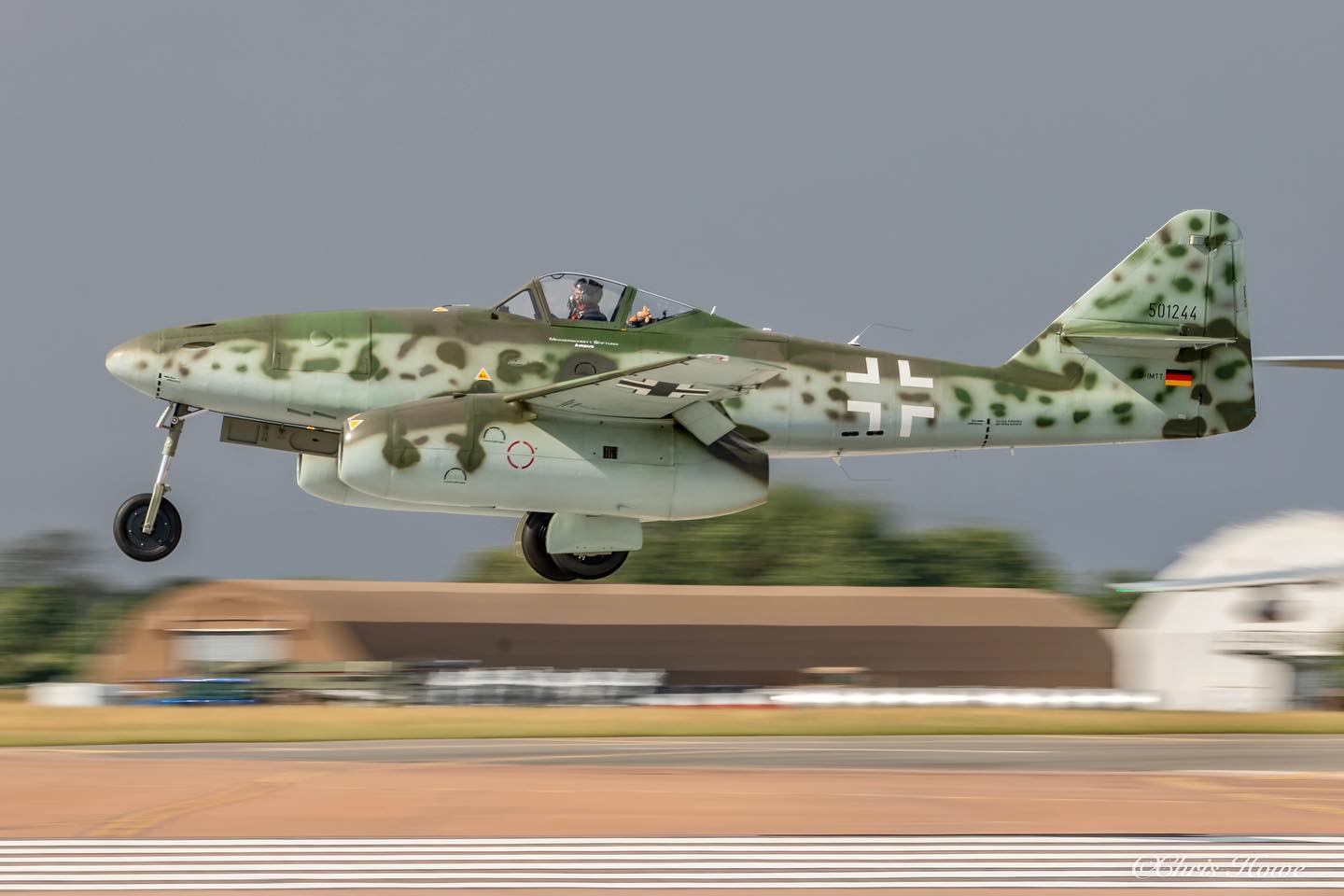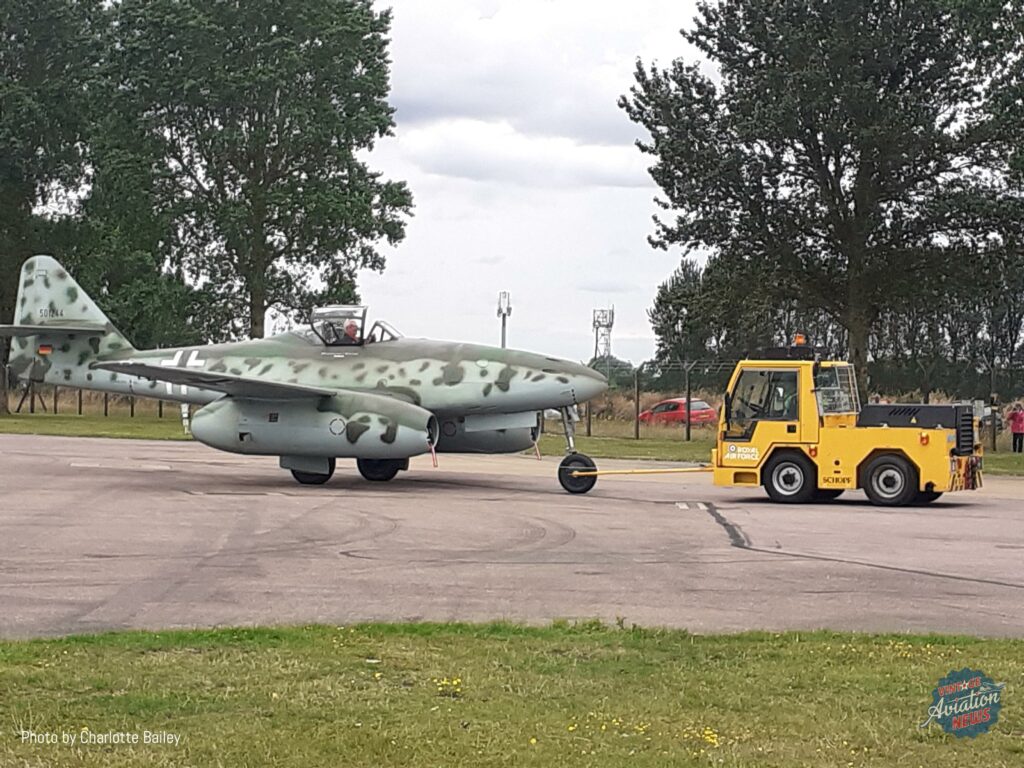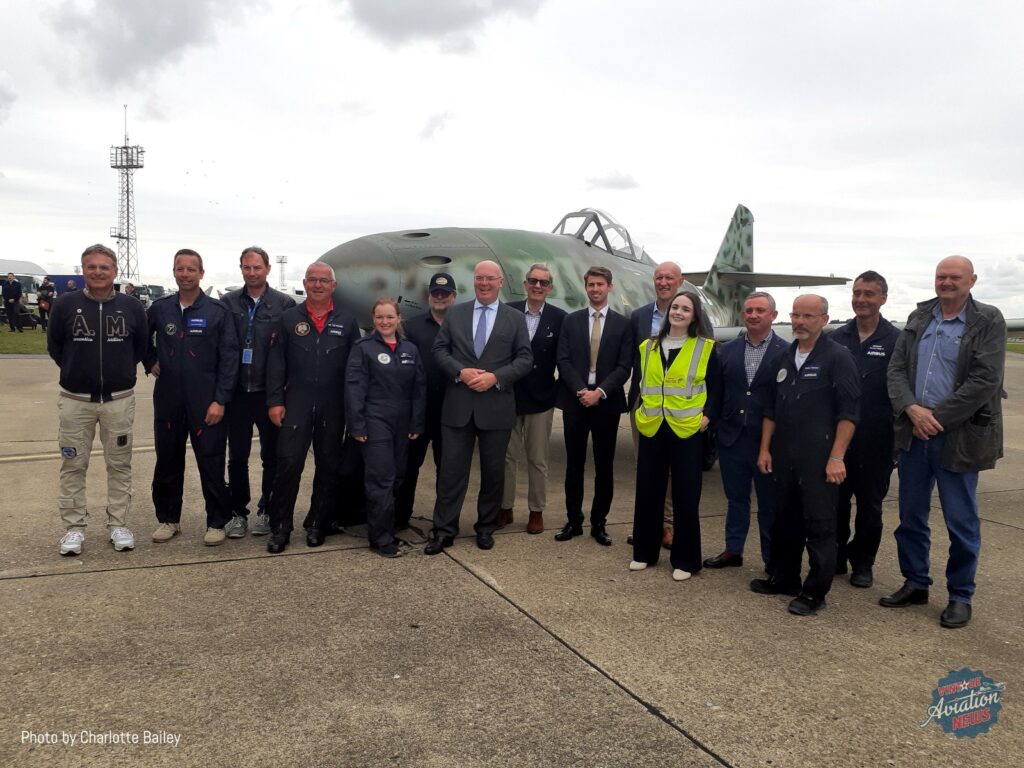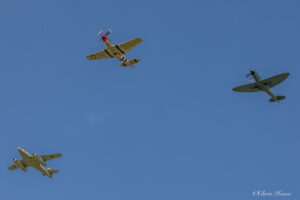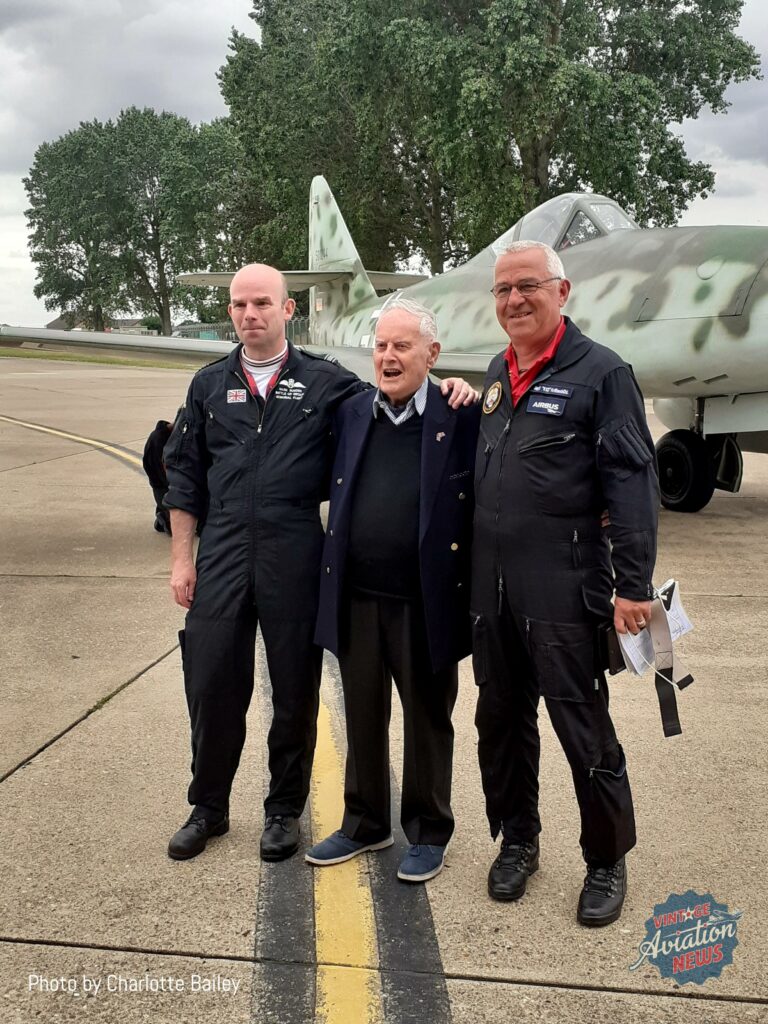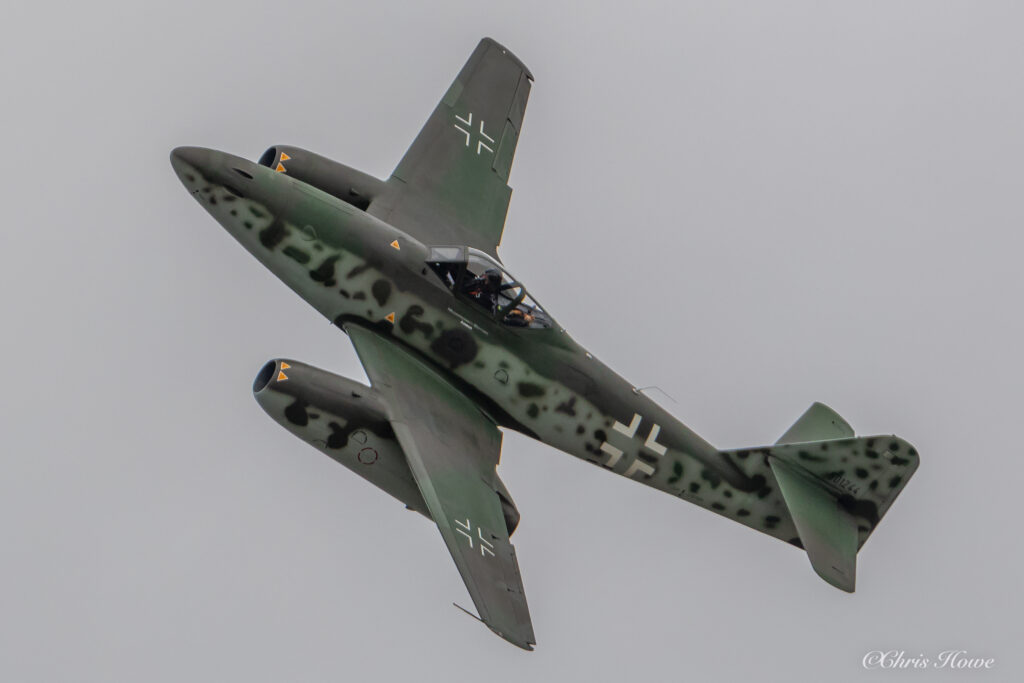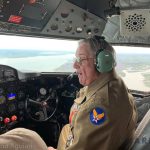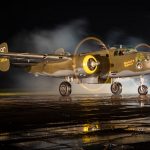By Charlotte Bailey
It’s a sight that many thought might never have happened, certainly not this century: a Luftwaffe fighter once described by Eric ‘Winkle’ Brown as “the most formidable aircraft of the Second World War” sharing the apron at RAF Coningsby with two Supermarine Spitfires. However, following the Me262’s iconic arrival at this year’s Royal International Air Tattoo, a special day of seminars and a unique formation flight celebrated the type’s historic presence in the UK. Made possible by the Airbus Historical team, who described the initiative as a “fantastic way of creating emotion”, the day also saw the last surviving Mosquito pilot to have engaged the Me262 finally come face-to-face with his one-time foe.
Almost eight decades since the Messerschmitt Me262 – the first-in-series production jet fighter and one representing a “quantum leap in fighter performance” (Winkle’s words again) – first threatened the security of the skies, its return to the UK has been met with unrivaled enthusiasm. Not seen against a British backdrop since the Royal Aircraft Establishment (RAE) displayed a captured Me262 in late 1945, the reception the aircraft received on Twitter alone was nothing short of spectacular: many following the aircraft’s flight across from Manching through Luxembourg, Belgium, and France before finally touching down
Although ten original Me262s exist, none are in airworthy condition. Instead, a 1993 initiative oversaw the construction of ten replica airframes in Texas, the second of which was transferred to the Bavarian-based Messerschmitt Museum of Flight in 2006 (operated as D-IMTT). A collaboration between the Messerschmitt Foundation and Airbus (the latter of whom who help keep nearly 50 vintage aircraft in flying condition), the museum’s aim – in the words of engineer and museum head Mattias Kobler – is to keep as many exhibits airworthy as possible, enabling visitors to “feel, hear, smell and see aircraft in their natural element: the air”.
Despite being a replica, the Me262 looks every inch the sleek, shark-like adversary it was envisaged as when, back in March 1940, the German Air Ministry started development of the revolutionary new aircraft. Designated the ‘Silber’ (‘Silver’), the Me262 became operational with the Luftwaffe in mid-1944, operating from long concrete runways (the airfields which possessed these designated ‘Silberplatze’). Although plagued by production productions (notably shortages in raw materials), a total of 1,433 airframes were delivered, and the type is estimated to have downed between 300-450 Allied aircraft for the loss of around 100 of its own.
Although D-IMTT remains as sympathetic to original specifications as modern safety criteria allows, one notable difference is the substitution of the two original Jumo 004B powerplants (optimistically estimated to have a maximum 25 hours’ life, owing to metallurgy complications) for two modern GE CJ610 turbojet engines. Operated to EASA CS-23 certification requirements (and with the Design Organisation Authority now owned by Airbus), a total of 180-plus modifications include upgraded brakes and contemporary cockpit avionics. Not that you could tell by looking at the outside, however.
Neither do these subtle modernizations affect the Me262’s aerodynamic handling qualities, explains test pilot Geri ‘K12’ Kraehenbuel, who possesses nearly 130 hours on the type. The small tail and ailerons – compounded by the engines slung under the wings – do not make for harmonized controls, with the aircraft prone to experiencing the dreaded Dutch Roll. “I’d describe it as like dancing with a beautiful lady,” he laughs. “Everything is fine until one of you treads on the other’s toes”. Kraehenbuel’s wealth of experience sits in stark contrast to would-be Luftwaffe pilots who, despite Messerschmitt’s s recommendation of ten hours’ flight training time, were given just two take-offs and landings before being deemed combat-ready.
However, despite the relative inexperience of Luftwaffe pilots, the Me262 nevertheless represented a very deadly foe: something 102-year-old Mosquito veteran Flight Lieutenant Colin Bell DFC experienced first-hand in 1945. On one of his 15 missions over Berlin, a white light in the Mosquito’s cockpit alerted Bell to the presence of an adversary on his tail. “I knew I had to act immediately because if he got a visual on you, you were dead!” explained Bell, who suspected the aircraft to be the mighty 262. “The firepower of the Me262 was so formidable that he’d turn you into confetti in a single blast”. After dropping down from 25,000ft to 10,000ft where the jet’s 45-minute endurance would be further compromised, Bell finally managed to lose his would-be assailant. “During a chat to one [Secret Intelligence Service] officer, he explained that if you couldn’t shake off a night fighter then it was possible – indeed, probable – that it was jet-powered,” he explained. “I don’t know how much faster than the Mossie the 262 was – I’d heard a figure of 100mph mentioned – but he could certainly come up behind me very quickly”.
Lucky to be alive, Bell went on to complete a total of 150 missions over Germany: thankfully, never meeting the Me262 again. Some 78 years later, as the hangar doors of its UK host – the Battle of Britain Memorial Flight – rolled open, Bell was finally to come face-to-face with his would-be assailant. After patting the aircraft on one side, he announced: “Now I hope I never see the damn thing again!”
However, if you’d like to get up close to the Me262, we can well recommend a visit to its home base in Manching: www.flugmuseum-messerschmitt.com.
For more great aviation photography by Chris Hove, visit his Instagram page at @cjh3051photography







